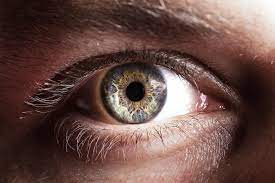
Scientists Baffled by Man Who Can Change His Pupil Size on Command
Published on September 7, 2021 at 2:27 PM by Mc Noel Kasinja
A 23-year-old student in Germany can reportedly shrink and enlarge his pupils on command, a feat previously thought to be physically impossible.
The dilation and constriction of the pupil were believed to be completely automated processes triggered by various factors, like entering a bright or dark environment, but a recent case study suggests that isn’t always the case. A young student in Germany is believed to be able to voluntarily control the tiny muscles that adjust the size of the pupil, a feat once thought to be impossible. The authors point out that while some people can alter their pupil size via “indirect methods”, this person is instead able to directly control the sphincter muscle in his eyes to adjust the size of his pupils.
Apparently, the German man, referred to in the study as D. W., realized he had the ability to voluntarily control the size of his pupils when he was 16 years old, while trying to “relax” his eyeballs after a long computer gaming session with his friends. A friend noticed that one of his pupils was significantly larger than the other, and let D.W. know. He has been honing the unusual superpower ever since.
“I showed a friend that I can ‘tremble’ with my eyeballs, and he noticed that my pupils became small,” D.W. told Christoph Strauch, senior author of the new case report and an assistant professor in the experimental psychology department at Utrecht University in the Netherlands. “Constricting the pupil feels like gripping, tensing something; making it larger feels like fully releasing, relaxing the eye.”
Knowing that a small number of people have the power to adjust the power of their pupils by indirect means that include thinking about bright light or extreme darkness, and by mentally calculating something, researchers at Ulm University tested D.W. to see if he was using such a technique. They measured the electrical properties of the skin by applying a voltage to test if he was relying on mental effort to control the size of his pupils. He wasn’t.
All throughout the testing phase, researchers found no indication that D.W. was adjusting his pupil size indirectly. By what appears to be direct control of his eye musculature, he was able to dilate his pupils up to 2.4 millimeters in diameter and constrict them down to 0.88 mm. Moreover, the young man was even able to constrict his pupils beyond the maximum degree typically observed when focusing on close objects. This allowed him to see objects clearly nearly two times closer to his face than he could without controlling his pupils.

Photo: Swapnil Potdar/Unsplash
Scientists noted that D.W. could control his pupil size while at ease and chatting with the researchers, adding that functional magnetic resonance imaging (fMRI) showed increased activation of certain parts of the brain involved in volition, which suggests voluntary muscle movement.
Although the study couldn’t prove that the young man wasn’t using any indirect means, it found no signs of such strategies, which makes D.W. the first person known to directly control the size of his pupils on command. Strauch and his colleagues believe that there are more people with this unusual ability out there, and some have even reached out to the team in hopes of helping them better understand the process.


